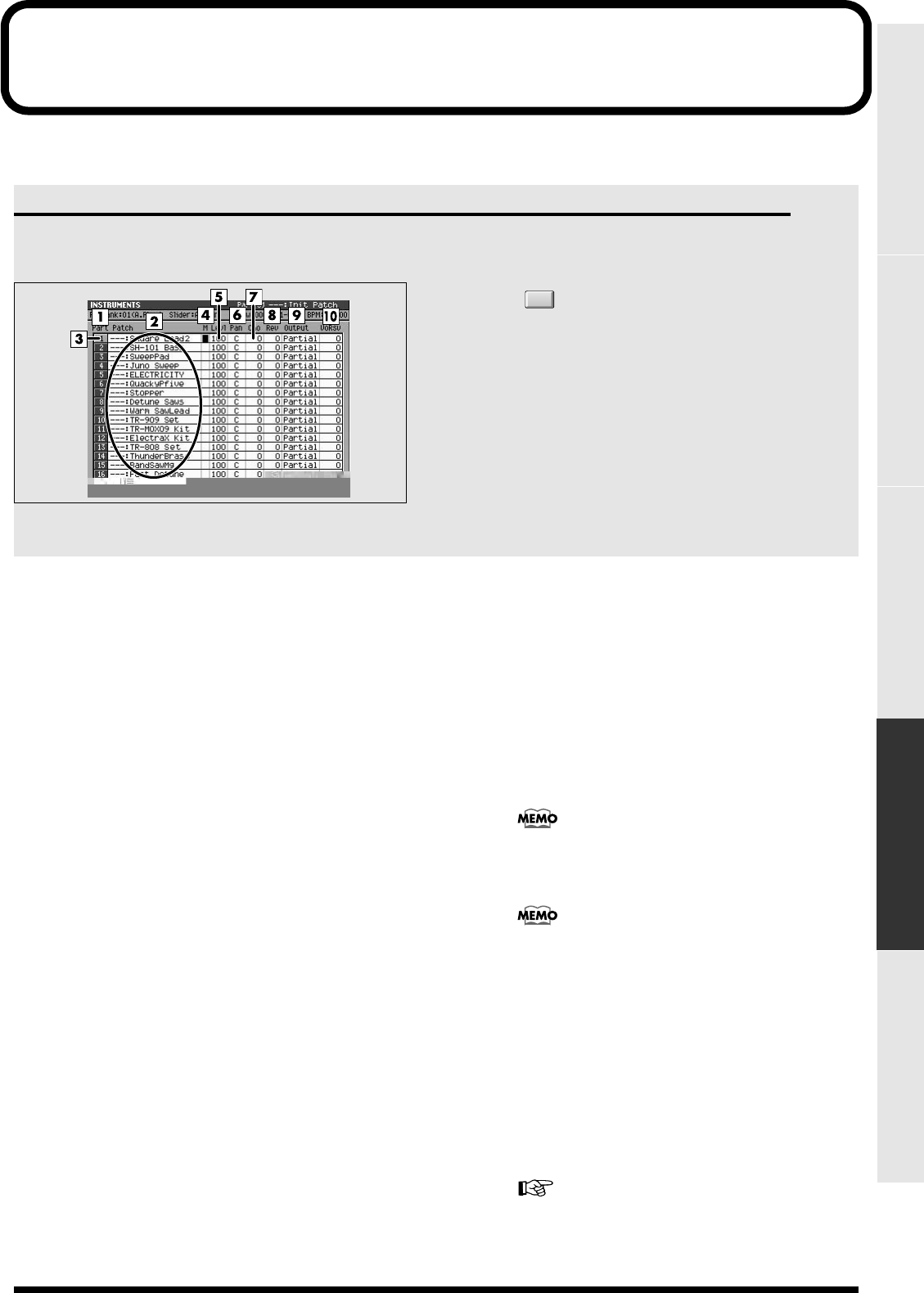
265
Common items in all screens SEQUENCE SONG SETUP INSTRUMENTS AUDIO PHRASES
INSTRUMENTS
Here you can make instrument-related settings.
INSTRUMENTS screen
Here you will make mainly PATCH settings (a
“patch” is analogous to an individual instrument).
To access this screen
•
INSTRU-
MENTS
Explanation of each area
1.
Part number
The number of currently selected part is highlighted.
2.
Patch
This area lists the patch names.
3.
Current part
The part selected by the cursor is called the “current
part.” Its part number is highlighted.
4.
M (Mute)
Specifies the mute status of each part.
Values:
Off
, On
5.
Levl (Level)
Adjusts the output volume of each part.
Range: 0~
100
~127
6.
Pan
Sets the panning of each part.
Range: L63~
0
~R63
7.
Cho (Delay/chorus send level)
Sends the audio of the part to the delay/chorus effect.
Range:
0
~127
8.
Rev (Reverb send level)
Sends the audio of the part to the reverb effect.
Range:
0
~127
9.
Output (Output Assign)
Specifies the output destination of the part audio.
Range:
Partial
, Mix, AUX1~AUX4,
MLT1~MLT8, MLT1/2~MLT7/8
10.
VoRsv (Voice reserve)
Specifies the number of voices that will be reserved
for each part if you attempt to play more than 32
voices of polyphony simultaneously.
Range:
0
~32
The total value of this setting for all parts is limited
to 32. You can't make settings that would exceed
this total.
The MV-8000 has a maximum polyphony of 64
voices. The actual number of available notes will
depend not only on the number of notes you are
playing, but also on the number of partials used by
each patch, and the number of samples that make
up each partial. Here's how to calculate the
polyphony that is used if the MV-8000 is playing
one patch.
(number of voices) = (number of partials in the
patch being sounded) x (number of the channels of
samples usage for the partial [SMT])
For details the voice reserve, refer to
To allocate a
specific amount of polyphony
(p. 48).
ECS05_manual_e.book 265 ページ 2005年11月30日 水曜日 午前11時14分


















